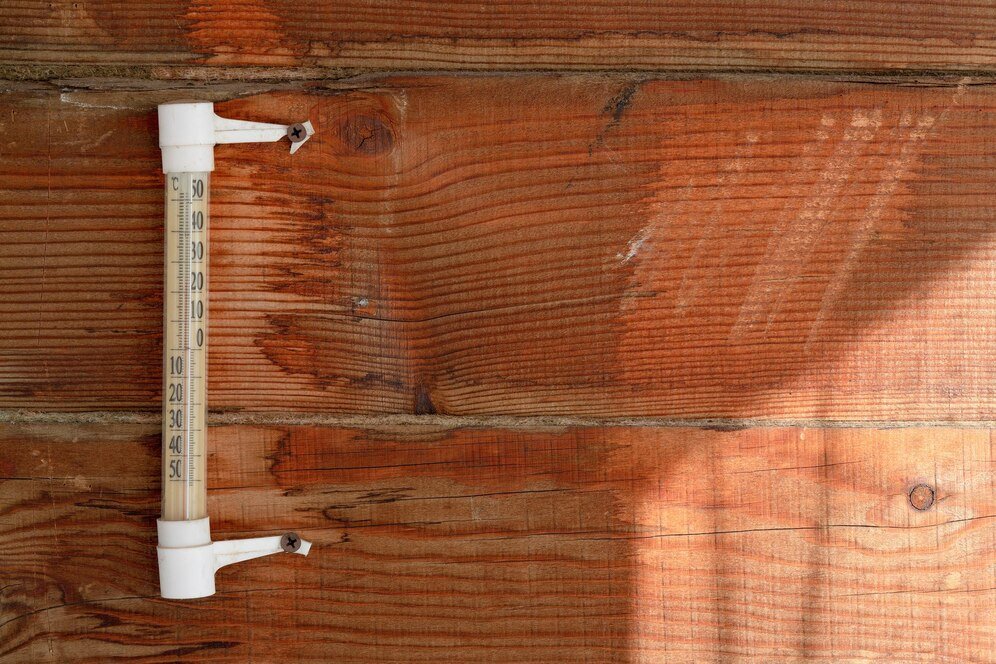
How to Remove Heat Marks from a Wooden Table? Step by Step guide
Share
It happens to the best of us. A hot cup of coffee placed directly on your cherished dining table, a steaming dish set down without a trivet, or a warm pizza box carelessly left on your coffee table. The result? Those unsightly white heat marks that can make any wood lover's heart sink. But before you resign yourself to a permanently damaged table or consider costly professional restoration, there's good news: most heat marks can be removed with simple household items and a little patience.
Understanding Heat Marks on Wood
Heat marks on outdoor wooden furniture aren't just surface stains they actually result from moisture trapped within the wood. When a hot item comes in contact with wood, the heat causes the wood's pores to expand, allowing moisture to penetrate beneath the finish. As the wood cools, this moisture becomes trapped, creating those cloudy white marks that ruin the appearance of your beautiful table.
The faster you address these heat marks, the better your chances of complete removal. Marks that have lingered for months or years are more challenging to eliminate, but even long-standing heat damage can often be improved with the right techniques.
Method 1: The Heat Method (Fighting Fire with Fire)
It may seem counterintuitive, but one of the most effective ways to remove heat stains is by applying more heat. This method works by reopening the wood's pores to release the trapped moisture.
What you'll need: Hair dryer or iron, Clean, soft cloth (preferably white cotton) and Water (if using iron)
For the hair dryer technique:
- Clean the stained area thoroughly to remove any dust or debris.
- Set your hair dryer to its lowest heat setting (never use cool air, as it won't open the wood pores).
- Hold the dryer a few inches from the stain and move it back and forth across the affected area.
- Continue for 1-2 minutes, checking periodically to see if the stain is fading.
-
Increase heat slightly if needed, but be cautious not to damage the finish.
For the iron technique:
To remove heat marks with an iron, start by placing a clean, thin cotton cloth over the affected area - slightly dampened for steam-based approach or dry for oil-based finishes. Set your iron to low or medium heat (avoiding steam for oil-based finishes) and gently press it onto the cloth while making small circular motions. Check your progress frequently by lifting the cloth to prevent overheating the wood. You may need to repeat this process several times until the stain disappears completely, as patience is key to successfully removing heat marks without damaging the furniture.
These heat methods work by allowing the trapped moisture to escape through the reopened pores. Once the moisture evaporates, the white discoloration should fade or disappear entirely.
Method 2: The Toothpaste and Baking Soda Mix
This method uses mild abrasion and chemical reaction to lift heat marks from wood surfaces.
What you'll need: Plain white non-gel toothpaste (avoid colored or gel varieties), Baking soda, Small bowl for mixing, Soft cloth for application and Clean cloth for wiping
Steps:
- Mix equal parts white toothpaste and baking soda to create a thick paste.
- Gently apply the mixture directly to the heat stain using a soft cloth.
- Rub lightly in the direction of the wood grain.
- Let the mixture sit for 5-10 minutes.
- Wipe away with a clean, slightly damp cloth.
- Dry thoroughly and assess the results.
- Repeat if necessary, but avoid excessive application that could damage the finish.
This method works because the mild abrasives in toothpaste combined with baking soda's alkaline properties help break down and lift the trapped moisture causing the stain.
Method 3: The Mayonnaise Miracle
It sounds strange, but this kitchen staple has proven remarkably effective at removing heat marks from wood.
What you'll need: Mayonnaise (real mayonnaise, not light or low-fat varieties), Clean cloth and Soft towel for buffing
Steps:
- Apply a generous layer of mayonnaise directly to the heat stain.
- Allow it to sit for at least 2-3 hours, or overnight for stubborn stains.
- The oils in the mayonnaise will gradually penetrate the wood's pores and displace the trapped moisture.
- Wipe away the mayonnaise with a clean cloth.
- Buff the area gently with a soft towel.
The effectiveness of mayonnaise lies in its oil content, which works to penetrate the wood and release the trapped moisture. Petroleum jelly can work similarly if you don't have mayonnaise on hand.
Method 4: Oil-Based Solutions
Various oils can help remove heat marks by penetrating the wood and displacing moisture.
What you'll need: Olive oil, mineral oil, or lemon oil, Salt (for olive oil method), Soft cloth and Clean towel for buffing
Steps:
- For olive oil: Create a paste with salt and olive oil, applying it to the stain and gently rubbing with the grain.
- For mineral or lemon oil: Apply directly to the heat mark with a soft cloth.
- Let the oil sit for several hours or overnight.
- Wipe away excess oil and buff the surface to restore shine.
Oils work by seeping into the wood pores and pushing out the trapped moisture that causes white marks.
Prevention: The Best Remedy
While these methods can work wonders, preventing heat damage in the first place is always preferable. Consider these simple habits: Always use coasters under beverages. Place trivets or heat-resistant mats under hot dishes. Use tablecloths or placemats during meals. Apply a quality protective finish to your outdoor wooden table. Consider using table pads for added protection.
When to Call a Professional
If your attempts to remove heat marks don't succeed, or if you're dealing with valuable antique furniture, seeking professional help might be your best option. Furniture restoration specialists have specialized tools and products that can address more stubborn damage without risking further harm to your cherished pieces.
